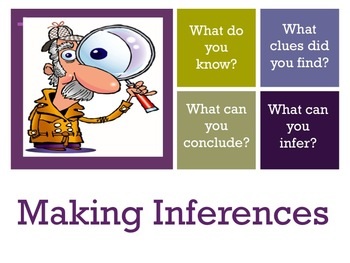7 Making Inferences
Complex readings usually present information in subtle ways. Many times authors do not convey ideas explicitly. They “hide” intentions, viewpoints, and arguments beneath the words of sentences and paragraphs. This is why good readers need to step beyond the textual words of the article and make inferences.
When you make an inference, you need to read the lines of the paragraph carefully and draw conclusions based on clues that the author presents. You also need to bring your own knowledge of the topic to this process. In the end, an inference is the result of your critical thinking. It is a logical deduction that is extracted from the text.
Making inferences can be tricky. It is very easy to let your imagination flow and reach conclusions that are off-track. In that case, you will not produce an inference, but an opinion on the topic discussed in the lines of the text. Therefore, inferences are contextual.
Check these strategies when making inferences:
- Examine the tone of the words that the author is using. Ask yourself these questions: Do the words of the paragraph have a positive, negative, ironic, or pessimistic connotation, for example? Detecting the tone of the words is, perhaps, the first step to forming an inference.
- Notice the target audience to whom the text is directed. Ask yourself these questions: Does the author intend to appeal to a specific audience? Who is not included in this audience?
- Read the lines of the paragraph carefully and make assumptions in the context of the paragraph. In other words, restrict your inferences to specific ideas in the text. Do not speculate beyond the evidence in the text. Do not elaborate opinions too far beyond the information in the text.
- Make connections between the text and your own knowledge. Many times, our previously acquired knowledge of the subject matter serves as a solid platform to form an inference in perfect harmony with the subtle ideas that the author is expressing along those lines.
Exercise
Read the short paragraph and then answer the questions. Each question asks you to make a logical inference based on textual information
“Thunder struck and rain poured. Joe stared blankly out of the window, trying to contain his emotions that raged like the weather. Dropping the kite from his hand, Joe broke out into full sobs. His mother comforted him: ” It’s OK, it’s OK. We’ll just find something else to do”. She began to unpack the picnic basket that was on the kitchen counter and offered him a sandwich. Joe snapped, “I don’t want a sandwich!!”. A flash from the sky lit up the living room, followed by a loud boom”.
Questions:
- Why is Joe so upset?
- What were Joe and his mother planning to do today?
The content on this PB page has been paraphrased from the websites below. Ideas have been blended to configure this information. For specific details, and to learn more about these topics, visit:
- https://www.scribd.com/doc/296501998/Inferences-Worksheet-1
- Making Connections 4; Williams and Vittorio, 2016


